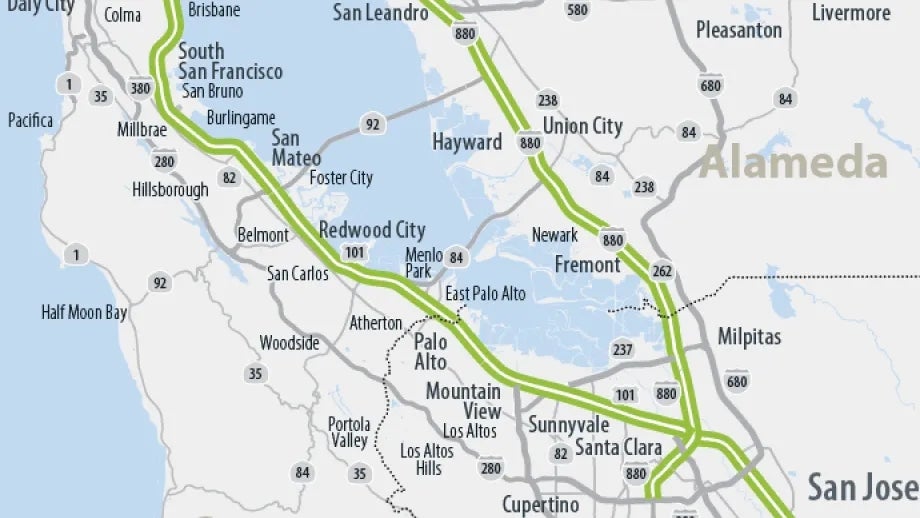Adaptive Ramp Metering
MTC is installing metering lights on roughly 300 freeway on-ramps around the Bay Area.
Ramp metering traffic signals on freeway on-ramps reduce freeway congestion by controlling the frequency at which vehicles enter the freeway, and preventing large groups of vehicles from entering all at once. They are a lot less expensive than widening a freeway, and can be installed quickly.
Like traffic signals on a busy street, ramp meters manage the flow of traffic entering a freeway, which:
- Makes merging easier
- Reduces the potential for accidents
- Reduces freeway congestion by smoothing out traffic flows
- Delivers more consistent and reliable travel times
- Improves air quality
Travel Times Drop
Freeway travel times dropped sharply after installing ramp meters in many parts of the Bay Area:
- Alameda County /Interstate 580/ Foothill Road to North Flynn Road — down 37%
- San Mateo County /U.S. 101/ San Mateo to Palo Alto — down 30%
- Solano County /Interstate 80/ Red Top Road to North Texas St. — down 25%
- Sonoma County /U.S. 101/ Petaluma to Windsor — down 9%
Adaptive vs. Traditional Ramp Meters
Adaptive ramp metering on a corridor level provides additional benefits compared to traditional ramp meters, including, but not limited to:
- Provide a corridor management system accounting for real time upstream and/or downstream traffic congestion.
- Enables the ramp metering system to adapt to varying traffic demands due to seasonal variation, weekend congestion, traffic growth or travel pattern changes over time.
- Manage freeway incidents more effectively.
History
In the Bay Area, ramp metering was first introduced to the Silicon Valley in 1971. Since 2006, MTC has been working closely with the California Department of Transportation, county transportation agencies and city governments to install and activate ramp meters throughout the Bay Area.
The existing ramp metering system operates based on conditions upstream of the metered on-ramp, and at the rates and plans developed looking at typical historical data. In order to more effectively manage the freeway corridor as a whole, upgrading to an adaptive ramp metering system is an ongoing process.
MTC works closely with the California Department of Transportation, county transportation agencies and city governments to fine-tune ramp-metering projects to the unique demands of various freeway corridors.
I-880 and US-101 are two of the most congested corridors in the Bay Area. Traditional local responsive ramp meters have been implemented and activated along a majority of the corridors. To more effectively manage the freeway corridor as a whole, MTC and Caltrans staff are working together to upgrade the existing local responsive metering system to an adaptive ramp metering system.
Caltrans currently operates corridor adaptive ramp metering using the Fuzzy Logic algorithm on the Alameda-Contra Costa I-80 corridor. The same algorithm will be applied on both I-880 and US-101.

